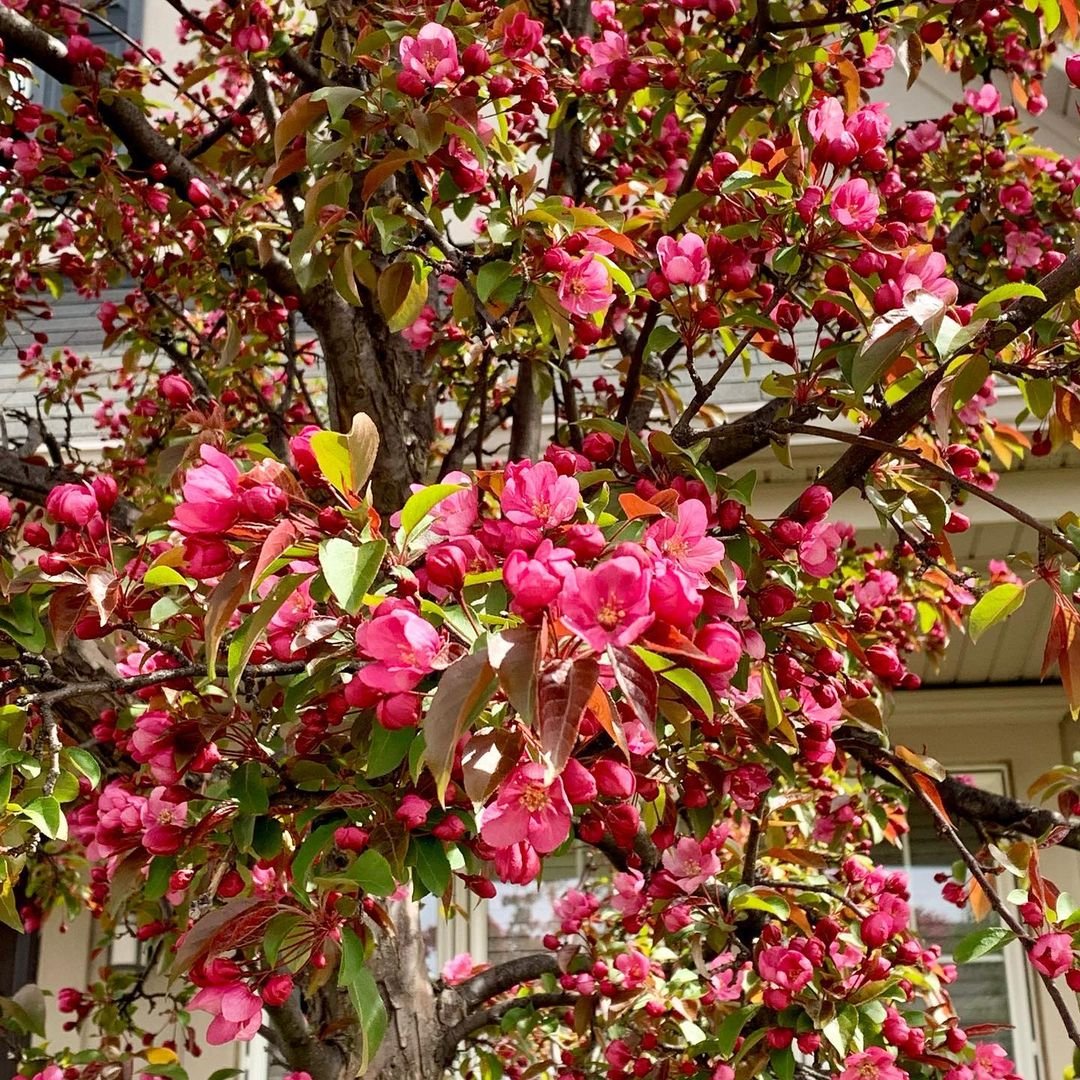Discover the charm and versatility of crabapple trees. This comprehensive guide covers everything you need to know about selecting, planting, and caring for these lovely ornamental trees that add beauty and interest to any landscape.
Crabapple trees are a beloved sight in many gardens and landscapes across the United States. These ornamental trees are prized for their stunning spring blooms, attractive foliage, and colorful fruit that persists throughout the fall and winter months. Whether you’re a seasoned gardener or a novice looking to add a touch of beauty to your outdoor space, crabapple trees are a fantastic choice. In this comprehensive guide, we’ll cover everything you need to know about selecting, planting, and caring for these versatile and low-maintenance trees.
What Are Crabapple Trees?

Crabapple trees are small to medium-sized deciduous trees that belong to the Malus genus, which is part of the Rosaceae (rose) family. They are closely related to the domestic apple (Malus domestica) but are generally smaller in size and have smaller fruit. Despite their name, crabapples are not true crabs but are cultivars bred for their ornamental value.
Crabapple trees come in a wide variety of cultivars, each with its own unique characteristics, such as flower color, fruit size and color, growth habit, and disease resistance. This diversity allows gardeners to choose the perfect crabapple tree to suit their specific needs and preferences.
Benefits of Growing Crabapple Trees

Beyond their undeniable beauty, crabapple trees offer a range of benefits that make them a valuable addition to any landscape:
- Ornamental Value: Crabapple trees are prized for their stunning spring blooms, which can range from pure white to shades of pink, red, and even purple. Their colorful fruit and fall foliage also add seasonal interest to the landscape.
- Wildlife Attraction: The fruit of crabapple trees is a valuable food source for birds, squirrels, and other wildlife, making these trees excellent additions to wildlife-friendly gardens.
- Versatility: With their compact size and diverse cultivars, crabapple trees can be grown in a variety of settings, from small urban gardens to larger suburban landscapes.
- Low Maintenance: Crabapple trees are generally low-maintenance and resistant to many common tree diseases, making them a great choice for busy gardeners.
Selecting the Right Crabapple Tree

With so many cultivars to choose from, selecting the right crabapple tree for your needs can be a daunting task. Here are some factors to consider:
- Size and Growth Habit: Crabapple trees range in size from dwarf cultivars that grow only 6-10 feet tall to larger varieties that can reach 25 feet or more. Consider the mature size and growth habit (upright, spreading, weeping) to ensure the tree fits your available space.
- Flower Color and Bloom Time: Crabapple trees are available with flowers in shades of white, pink, red, and even purple. Choose a cultivar with a bloom color and time that suits your preferences.
- Fruit Size and Color: While the fruit of crabapple trees is generally small and ornamental, some cultivars produce larger, more edible fruit. Consider the desired fruit size, color, and persistence on the tree.
- Disease Resistance: Some crabapple cultivars are more resistant to common diseases like apple scab, cedar-apple rust, and fire blight than others. Choose a disease-resistant variety to minimize maintenance.
- Cold Hardiness: Consider your local climate and select a crabapple tree cultivar that is hardy enough to withstand the winter temperatures in your area.
Planting and Caring for Crabapple Trees

Once you’ve selected the perfect crabapple tree for your landscape, it’s time to plant and care for it properly to ensure its long-term health and beauty:
- Planting: Choose a location with well-draining soil and ample sunlight (at least 6 hours of direct sun per day). Dig a hole twice as wide as the root ball but no deeper. Water thoroughly after planting and apply a 2-4 inch layer of mulch around the base of the tree, keeping it a few inches away from the trunk.
- Watering: Crabapple trees require regular watering during the first year after planting to establish a strong root system. Once established, they are generally drought-tolerant but may need supplemental watering during prolonged dry periods.
- Pruning: Prune your crabapple tree annually in late winter or early spring to remove any dead, damaged, or crowded branches. Thinning the interior of the tree will also improve air circulation and reduce the risk of disease.
- Fertilization: Crabapple trees generally do not require frequent fertilization, but a balanced, slow-release fertilizer can be applied in early spring if the tree appears to be growing poorly.
- Pest and Disease Management: While crabapple trees are generally low-maintenance, they can be susceptible to pests like aphids, borers, and diseases like apple scab and fire blight. Regular monitoring and prompt treatment with appropriate pesticides or cultural methods can help keep these issues under control.
- Winter Protection: In colder regions, wrapping the trunk of young crabapple trees with tree wrap or burlap can help prevent frost cracks and sunscald damage.
By following these planting and care guidelines, you can enjoy the beauty and benefits of your crabapple tree for years to come.
Pingback: How to Grow and Care for Citronella Grass (Mosquito Grass)
Pingback: The 14 Best Fruits To Grow In Containers -
Pingback: How to Grow and Care for Pitcher Plant: A Complete Guide
Pingback: Blue Apple Varieties: Facts and Growing Information
Pingback: Four O’Clock flowers: Care, Maintenance and Planting Tips
Pingback: Robinson Crabapple Tree: A Complete Care and Planting Guide
Pingback: Stunning Trees That Start with ‘E’ gardeners school
Pingback: Wonderful Woods : Trees That Start with W -
Pingback: Hellebore Flowers Offer Beautiful Late-Winter Blooms